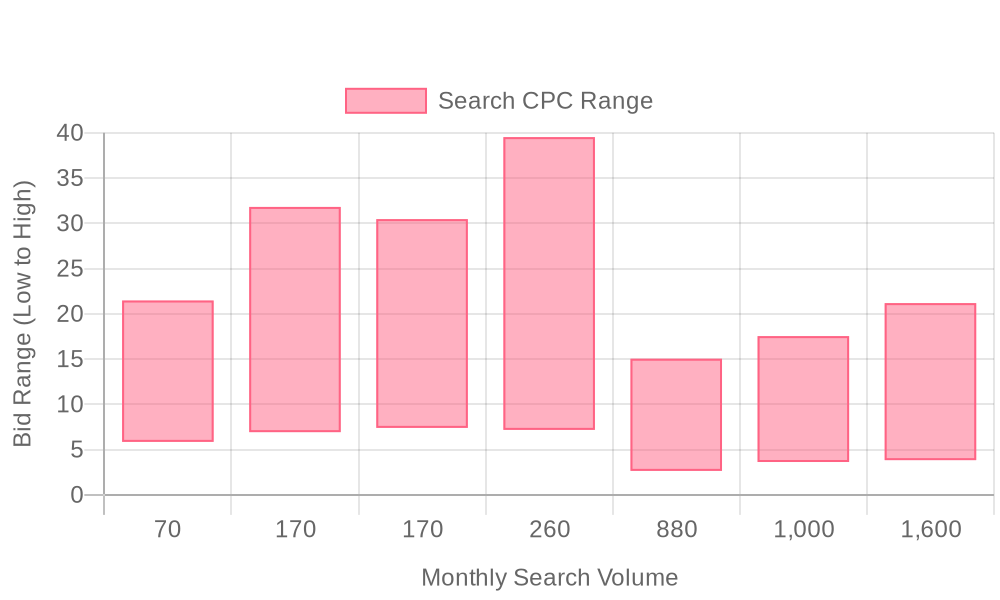
Supercharge your lead generation with a FREE Google Ads audit - no strings attached! See how you can generate more and higher quality leads
Get My Free Google Ads AuditFree consultation

No commitment
Supercharge your lead generation with a FREE LinkedIn Ads audit - no strings attached! See how you can generate more and higher quality leads
Get My Free Google Ads AuditFree consultation

No commitment
Supercharge your lead generation with a FREE Meta Ads audit - no strings attached! See how you can generate more and higher quality leads
Get My Free Google Ads AuditGet My Free LinkedIn Ads AuditGet My Free Meta Ads AuditFree consultation

No commitment
Supercharge your lead generation with a FREE Google Ads audit - no strings attached! See how you can generate more and higher quality leads
Get My Free Google Ads AuditFree consultation

No commitment
In an evolving marketing landscape, integrating Google Ads into your insurance claims processing strategy offers unmatched opportunities to target high-intent prospects. Yet, missing high-value prospects because they aren’t tracked in your CRM can lead to lost opportunities. Knowing exactly which businesses browse your site is critical in this sector, where the stakes are high. Modern solutions now allow insurance professionals to bridge these gaps by identifying anonymous visitors and enriching custom audience profiles, ensuring your ad spend targets real decision-makers with real intent. This setup guide will helpprofessionals effectively connect online marketing to offline lead generation, utilizing tailored ad strategies to improve ROI and conversion tracking.

Precision in targeting and measurement is essential for any insurance provider aiming to drive qualified claims leads and maximize marketing ROI. Insurance organizations that leverage data-driven Google Ads strategies can capture high-intent audiences at the moment they are actively seeking claims support. Integrating actionable insights and unified data flows ensures that every step of the campaign is accountable and aligned with revenue goals—see how PPC Fin streamlines medical claims processing for greater operational efficiency.
This playbook delivers a practical framework for deploying Google Ads for Insurance Claims Processing, built around sector-specific challenges and opportunities. Each phase, from keyword selection to cross-channel optimization, is designed to help insurance marketers systematically convert digital engagement into revenue-generating claims leads. For more practical frameworks, explore the latest in our marketing playbooks.

Insurance claims processing demands precision and agility. Digital marketing for insurance claims leverages Google Ads to reach decision-makers and policyholders at the moment of need, allowing insurers to fill the gap between traditional referral-based growth and scalable, data-driven acquisition. For agencies seeking to streamline operations and improve efficiency, exploring how PPC Fin streamlines medical claims processing offers valuable insights into optimizing workflows.
The landscape is defined by a complex audience mix. Insurance marketers face the challenge of capturing both policyholders urgently seeking assistance and claims managers evaluating service providers. Advanced targeting capabilities within Google Ads now allow campaigns to zero in on these distinct segments, optimizing ad spend and increasing qualified lead flow. B2B marketers can further enhance these efforts by unifying first-party data, pinpointing high-value accounts, and dynamically adjusting bids based on real-time engagement signals.
High-value claims services are no longer dependent solely on referrals. Technology has enabled insurance firms to proactively attract cases with substantial lifetime value using PPC for insurance agencies. By identifying website visitors and matching them to target accounts, marketers can prioritize outreach to those demonstrating intent, creating a direct pipeline for high-margin opportunities. This capability enhances Google Ads ROI for insurance, helping teams maximize the efficiency of every advertising dollar.
Rapid response to fluctuating demand is crucial, especially during surge periods like natural disasters or catastrophic events. Google Ads empowers insurance organizations to immediately activate campaigns in affected regions, ensuring that hot leads are captured while urgency is highest. Integrating in-market behavior and CRM signals, marketers can automate budget shifts to channels and audiences with the greatest conversion potential, reducing response times and eliminating follow-up lags during peak periods. To see how B2B teams can act on these opportunities and maximize impact, Sona provides automated data activation for seamless marketing execution.
Localized targeting is essential in insurance marketing. Intent signals derived from search behavior, geolocation, and account-level data now enable precision targeting in specific regions—whether responding to local weather events, regulatory changes, or industry-specific trends. Dynamic audience updates ensure that as leads progress through the funnel, retargeting strategies remain aligned, consistently engaging prospects with relevant offers and messaging. This data-driven approach to insurance lead generation ensures that every campaign is tailored for maximum impact, increasing the probability of conversion and long-term retention. If you're ready to unlock these advanced targeting capabilities, get started for free with Sona.


B2B revenue teams in insurance are discovering new avenues for growth by moving beyond broad, generic ad strategies. By leveraging data-driven tactics, marketers can reach specific claims audiences at exactly the right decision point, increasing both acquisition efficiency and ROI.
Insurance marketers equipped with unified intent and engagement data can precisely identify which verticals and content types yield the best returns. This holistic approach enables ongoing optimization of Google Ads strategies for insurance and ensures that every campaign is built to capture genuine demand in the evolving digital marketing landscape for insurance claims. Want to systematically uncover new growth opportunities? Get started for free with Sona.

Segmenting audiences in insurance claims advertising is the foundation for driving relevance and maximizing return on investment. Modern revenue teams achieve greater engagement by tailoring outreach to the unique needs of individual policyholders and corporate claims managers. This distinction enables marketing and sales organizations to communicate value more effectively, reducing wasted spend and increasing lead quality. For actionable insights on building and refining your segmentation strategies, browse the latest marketing blog articles.
When defining audience segments, precision is critical. Groups such as individual policyholders, who often seek fast, straightforward help, require different messaging from corporate claims managers handling complex, high-value cases. By identifying each segment’s intent signals—such as recent claim submissions, policy renewals, or engagement with self-service claim tools—marketers can tailor messaging, ad creative, and offers to meet real-time needs. This approach not only improves click-through and conversion rates but also supports aligning budgets with the highest-value prospects.
Creating segment-specific ad groups allows for customized creative and budget allocation. For example, ad groups targeting property claimants after a regional weather event will differ significantly from those focused on B2B clients looking for managed claims solutions. Leveraging dynamic audience tools, marketers can ensure these segments are automatically updated as users progress through the claims process—moving from initial inquiry to documentation submission, then to settlement. This dynamic updating ensures messaging stays relevant, increasing the likelihood of conversion. For specific methods to generate insurance leads using Google Ads, see this guide to insurance leads on Google.
Conversion validation and path tracking are crucial. Integrating CRM data with advertising platforms enables teams to accurately attribute claim submissions, document completions, and policyholder touchpoints to the original ad interaction. Advanced solutions allow marketers to identify visiting companies and user segments in real time, feeding this intelligence back into Google Ads for Insurance Claims Processing campaigns. As audiences move from initial contact to claim closure, enriched data syncs update both ad platforms and sales tools, allowing for accurate prioritization of follow-up and more efficient handoff between marketing and sales. This unified approach delivers higher engagement, more qualified leads, and measurable improvements in Google Ads ROI for insurance. If you want to experience the benefits of dynamic segmentation and intent-driven marketing firsthand, get started for free with Sona.

| Industry | Keyword | Monthly Search Volume | Competition Level | Low Bid | High Bid |
| Insurance Claims Processing | car accident insurance claim settlement | 70 | LOW | 5.86 | 21.47 |
| Insurance Claims Processing | usaa insurance claims process | 170 | LOW | 6.93 | 31.81 |
| Insurance Claims Processing | aaa insurance claim process | 170 | LOW | 7.4 | 30.46 |
| Insurance Claims Processing | car accident claim process | 260 | LOW | 7.18 | 39.52 |
| Insurance Claims Processing | state farm claim process | 880 | LOW | 2.65 | 15.04 |
| Insurance Claims Processing | insurance claims processing | 1000 | LOW | 3.63 | 17.54 |
| Insurance Claims Processing | car insurance claim process | 1600 | LOW | 3.84 | 21.18 |
A well-structured keyword strategy sits at the core of every successful Google Ads campaign for insurance claims processing. Selecting the right target terms ensures your budget is directed toward audiences with genuine intent to engage, resulting in higher conversion rates and a more predictable pipeline of qualified leads. For a deeper dive into insurance PPC, review this Google Ads strategy playbook for insurance.
Modern platforms allow marketers to move beyond basic keyword targeting by identifying anonymous visitors and matching them to company data in real time. This enables audiences to be segmented dynamically as they progress through the claims process or demonstrate higher buying intent. When integrated with Google Ads, enriched audience lists ensure that high-value prospects receive more relevant offers, while budgets are shifted automatically to the accounts most likely to convert. By combining CRM data and ad platform insights, marketers can continuously update audience segments and measure true ROI across both online and offline conversions, driving smarter decisions at every stage of the insurance claims processing journey. To experience this workflow, get started for free with Sona.
Effective keyword selection shapes the foundation of any successful Google Ads strategy for insurance claims processing. Begin by categorizing keywords according to the specific claim types your firm handles, such as auto, property, or liability. This granular approach ensures ads reach users actively searching for assistance relevant to their immediate needs, raising the quality of potential leads entering your funnel. For actionable keyword examples and segmentation tactics, explore this strategic guide for insurance PPC.
Enhance targeting precision by adding localized modifiers, reflecting specific regions or cities in your keyword list. This method connects your services to users with claims in your operational area and reduces wasted spend on irrelevant traffic. Incorporate long-tail queries that capture nuanced search intent—phrases like "storm damage insurance claim in Houston" or "commercial property claim help" filter for users closer to taking action. Employing negative keywords is essential to eliminate searches unrelated to your services, keeping your budget focused on high-value prospects. With advanced visitor identification and intent detection, you can further refine bids and keyword lists in real time, allowing your campaign to prioritize high-conversion accounts based on live market signals.
Ad copy is your direct connection to prospects navigating stressful claims scenarios. Headlines that address specific pain points, such as "Get Fast, Expert Help with Your Auto Claim," resonate immediately with policyholders seeking solutions. Trust indicators, including industry certifications or client testimonials, build credibility and encourage engagement, especially in a field where reliability is paramount. For industry-specific PPC messaging tips, browse our insurance agency PPC strategies.
Urgency-driven offers, like "Free Consultation for Claim Processing," motivate users to act swiftly while reducing hesitation. Leverage ad extensions to provide additional value; site links can direct users to FAQs or claims support, while call extensions make live assistance accessible from search results. Dynamically updating ad messaging with real-time CRM data ensures that your ads remain relevant as leads progress through different stages, keeping content aligned with each user’s current needs.
A seamless experience from ad click to landing page is critical for converting insurance claims leads. Ensure that every landing page matches the messaging promised in your ads and addresses the same pain points. Incorporate trust-building elements such as security badges, verified partner logos, and concise testimonials, which reassure users about data privacy and service quality. For a real-world example of effective landing page and campaign structure, see this claims specialist case study.
Every page should feature a prominent, clear call-to-action—whether it’s starting a claim, requesting a callback, or downloading a claims checklist. Mobile optimization is non-negotiable: landing pages must load quickly and display correctly on all devices, as many claimants initiate their requests from smartphones at the scene of an incident. Integrating landing page forms with your CRM and audience updates helps identify the source of each lead and allows real-time audience updates, letting you retarget or nurture leads with contextually relevant follow-up campaigns.
Constant optimization is the engine behind sustainable growth in insurance PPC campaigns. Track both macro conversions, such as completed claim submissions, and micro conversions like document uploads or live chat interactions, to build a comprehensive understanding of user behavior. For those starting or scaling claims processing operations, this step-by-step guide to insurance claims firms can help you align data-driven decisions with business growth.
Implement smart bidding strategies such as Max Conversions to automatically allocate budgets to high-performing keywords and audiences. Routinely test ad variations—adjusting headlines, calls-to-action, or imagery—to identify which combinations yield the highest engagement and lead quality. Integrating CRM data with your Google Ads account empowers you to sync enriched audience segments for retargeting, ensuring that ads and retargeting lists update dynamically as claims progress. This unified approach helps you move beyond simple click metrics, focusing instead on the metrics that drive revenue and lasting customer value in insurance claims processing. Ready to see real-time impact? Get started for free with Sona.
Building a strong digital presence in insurance claims processing requires a sophisticated approach that blends educational content, advanced targeting, and data-driven personalization. Modern insurance marketers see the highest ROI by aligning channel strategies with real-time audience insights, ensuring every campaign reaches prospects at their moment of need and intent.
Mastering Google Ads for Insurance Claims Processing means moving beyond basic campaign setup. It calls for a unified, intent-driven strategy where every audience touchpoint is informed by actionable data, segmented CRM insights, and a deep understanding of the claims journey. By weaving these practices into daily operations, insurance organizations can consistently capture high-value prospects, minimize wasted spend, and establish themselves as trusted leaders in the digital insurance landscape. To see how you can activate these strategies in your own operation, get started for free with Sona.
As we wrap up our exploration of leveraging Google Ads for insurance claims processing, it’s clear that understanding and harnessing the power of digital advertising can significantly boost your visibility and lead generation efforts. By strategically implementing Google Ads, you can effectively reach potential clients and stand out in the competitive insurance sector.
Throughout this article, we've navigated the core challenges of attracting the right clientele, identified key strategies for optimizing ad performance, and discussed solutions like targeting specific keywords and crafting compelling ad copy. These insights aim to empower you to enhance your ad campaigns and achieve tangible results.
Imagine transforming your digital presence with ads that not only draw attention but also convert prospects into loyal clients. By taking actionable steps informed by these strategies, you're positioning yourself for greater success and growth in the insurance claims industry.
To unlock the full potential of your advertising efforts, start for free and experience our platform's capabilities today. Let us help you drive actionable insights and achieve your business goals.
Google Ads can enhance your insurance claims processing leads by targeting high-intent audiences, using data-driven strategies to capture prospects actively seeking claims support, and integrating actionable insights to align campaigns with revenue goals.
Best practices include using high-intent, long-tail keywords, aligning landing pages with ad creatives, employing continuous optimization techniques, and integrating cross-channel methods to enhance lead generation.
Budgeting for Google Ads in insurance marketing should focus on targeting high-intent keywords and audiences, using data-driven insights to allocate resources to the most conversion-ready segments, and continuously optimizing for maximum ROI.
Target high-intent keywords such as 'auto accident claims help' or 'property damage filing assistance' to attract users actively seeking claims processing support.
While the article does not specify policies, it emphasizes the importance of aligning ads and landing pages with user intent and using audience segmentation to ensure compliance and effectiveness in targeting.
Join results-focused teams combining Sona Platform automation with advanced Google Ads strategies to scale lead generation

Connect your existing CRM

Free Account Enrichment

No setup fees
No commitment required

Free consultation

Get a custom Google Ads roadmap for your business
Join results-focused teams combining Sona Platform automation with advanced Meta Ads strategies to scale lead generation

Connect your existing CRM

Free Account Enrichment

No setup fees
No commitment required

Free consultation

Get a custom Google Ads roadmap for your business
Join results-focused teams combining Sona Platform automation with advanced LinkedIn Ads strategies to scale lead generation

Connect your existing CRM

Free Account Enrichment

No setup fees
No commitment required

Free consultation

Get a custom Google Ads roadmap for your business
Join results-focused teams using Sona Platform automation to activate unified sales and marketing data, maximize ROI on marketing investments, and drive measurable growth

Connect your existing CRM

Free Account Enrichment

No setup fees
No commitment required

Free consultation

Get a custom Google Ads roadmap for your business
Over 500+ auto detailing businesses trust our platform to grow their revenue
Join results-focused teams using Sona Platform automation to activate unified sales and marketing data, maximize ROI on marketing investments, and drive measurable growth

Connect your existing CRM

Free Account Enrichment

No setup fees
No commitment required

Free consultation

Get a custom Google Ads roadmap for your business
Over 500+ auto detailing businesses trust our platform to grow their revenue
Join results-focused teams using Sona Platform automation to activate unified sales and marketing data, maximize ROI on marketing investments, and drive measurable growth

Connect your existing CRM

Free Account Enrichment

No setup fees
No commitment required

Free consultation

Get a custom Google Ads roadmap for your business
Over 500+ auto detailing businesses trust our platform to grow their revenue
Our team of experts can implement your Google Ads campaigns, then show you how Sona helps you manage exceptional campaign performance and sales.
Schedule your FREE 15-minute strategy sessionOur team of experts can implement your Meta Ads campaigns, then show you how Sona helps you manage exceptional campaign performance and sales.
Schedule your FREE 15-minute strategy sessionOur team of experts can implement your LinkedIn Ads campaigns, then show you how Sona helps you manage exceptional campaign performance and sales.
Schedule your FREE 15-minute strategy sessionOur team of experts can help improve your demand generation strategy, and can show you how advanced attribution and data activation can help you realize more opportunities and improve sales performance.
Schedule your FREE 30-minute strategy sessionOur team of experts can help improve your demand generation strategy, and can show you how advanced attribution and data activation can help you realize more opportunities and improve sales performance.
Schedule your FREE 30-minute strategy sessionOur team of experts can help improve your demand generation strategy, and can show you how advanced attribution and data activation can help you realize more opportunities and improve sales performance.
Schedule your FREE 30-minute strategy sessionOur team of experts can help improve your demand generation strategy, and can show you how advanced attribution and data activation can help you realize more opportunities and improve sales performance.
Schedule your FREE 30-minute strategy session





Launch campaigns that generate qualified leads in 30 days or less.
